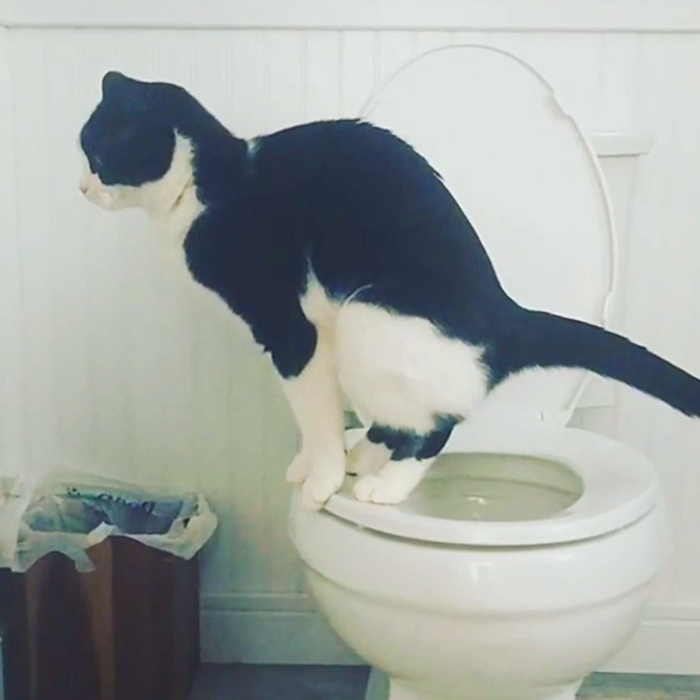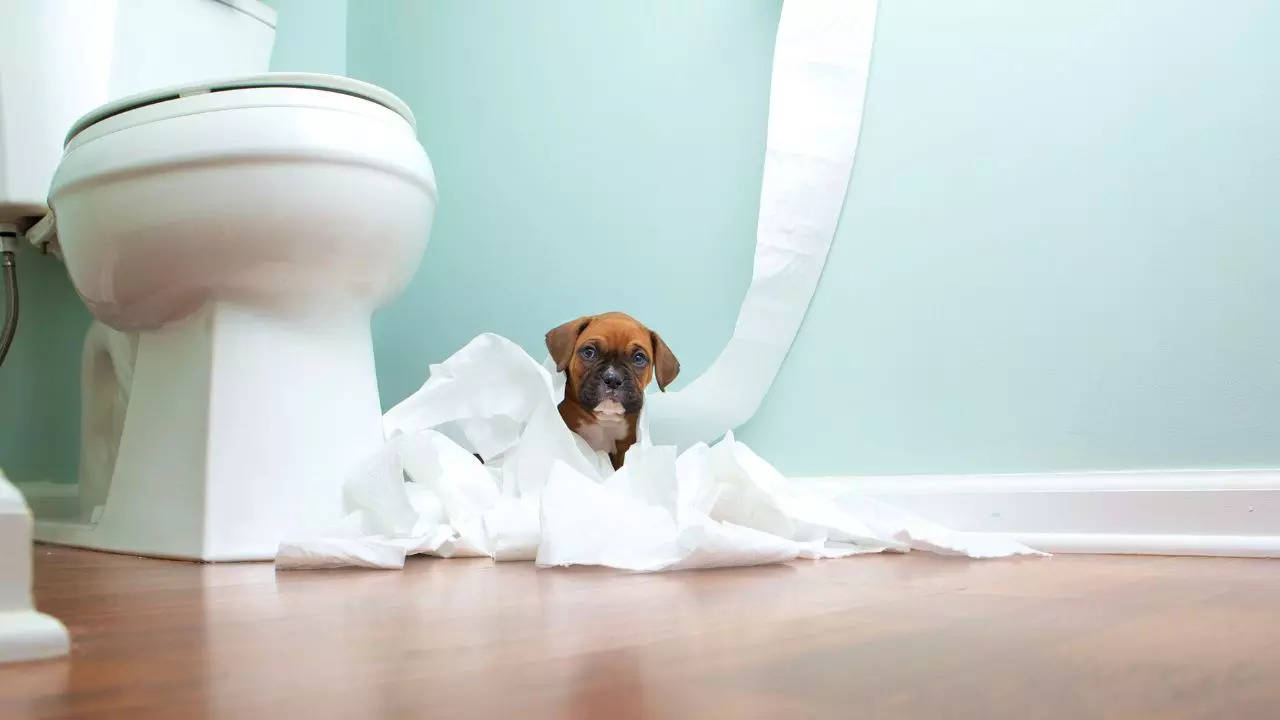The Implications of Flushing Animal Waste Down the Toilet
The Implications of Flushing Animal Waste Down the Toilet
Blog Article
Are you currently on the lookout for related information around Don't Flush Your Pets Poo Down The Loo, Vet Warns?

When it pertains to dealing with waste, particularly animal waste, lots of people usually turn to the practical choice of flushing it down the toilet. However, this apparently very easy option can have significant consequences for the atmosphere and public health. In this short article, we'll explore why flushing animal waste down the commode is a poor concept and supply alternate methods for appropriate disposal.
Introduction
Correct garbage disposal is important for keeping ecological sustainability and public health. While it may appear safe to flush animal waste down the toilet, it can lead to different issues, both for the setting and human health.
Risks of flushing pet waste
Environmental impact
Flushing pet waste introduces unsafe microorganisms and pathogens right into rivers, which can adversely impact marine environments. These microorganisms can infect water resources and harm marine life, interfering with delicate ecosystems.
Public health issues
Animal waste includes hazardous microorganisms such as E. coli and Salmonella, which can present significant health and wellness dangers to people. Flushing pet waste down the bathroom can pollute water materials, resulting in the spread of conditions and infections.
Alternatives to flushing
As opposed to flushing pet waste down the commode, there are several different disposal techniques that are much more eco-friendly and hygienic.
Composting
Composting animal waste is an eco-friendly means to get rid of it. By composting, organic matter is broken down right into nutrient-rich dirt, which can be utilized to feed gardens and plants.
Landfill disposal
Dealing with animal waste in a land fill is an additional choice. While not as eco-friendly as composting, it is a much safer choice to flushing, as it stops the contamination of water sources.
Pet garbage disposal systems
There are specialized animal waste disposal systems available that securely and hygienically throw away pet waste. These systems often utilize enzymes to break down waste and remove odors.
Steps to appropriate animal garbage disposal
To make read more certain correct disposal of pet waste, follow these actions:
Scooping and nabbing waste
Routinely scoop and bag animal waste making use of naturally degradable bags. This stops waste from infecting the setting.
Making use of designated waste containers
Dispose of bagged animal waste in designated waste bins, such as compost bins or landfill containers. Stay clear of flushing it down the commode at all costs.
Cleaning up can and animal locations regularly
On a regular basis clean can and animal areas to avoid the build-up of waste and bacteria. Use pet-safe cleaning products to keep hygiene.
Advantages of correct disposal approaches
Taking on proper disposal techniques for animal waste supplies numerous benefits:
Reduced environmental pollution
Proper disposal techniques reduce the threat of environmental pollution, safeguarding waterways and ecosystems from contamination
Minimized danger of water contamination.
By preventing flushing pet waste down the bathroom, the threat of water contamination is significantly lowered, securing public health.
Improved sanitation and health
Appropriate disposal methods promote much better sanitation and health, producing a safer setting for both human beings and pets.
Verdict
To conclude, flushing pet waste down the toilet is harmful to the atmosphere and public health. By adopting alternate disposal techniques and following proper waste administration techniques, we can lessen the unfavorable impact of animal waste and contribute to a cleaner, much healthier planet.
What To Do With Dog Poo – The Do's And Don'ts Of Disposing Of Faeces
Dog poo bins
Some councils provide dedicated dog waste bins in popular dog-walking areas that can take dog poo that has been bagged but you can legally dispose of dog waste in any public litter bin, as long as it is securely bagged. This also applies to your wheelie bin at home.
Do not flush
Water companies do not recommend flushing dog faeces down the toilet because certain parasites can survive the water processing treatment and are potentially harmful to humans. You should also never consider flushing dog poo that has been bagged down the toilet as the bags will not break down and instead create severe blockages in the sewage system.
In the woods
The Forestry Commission promotes a ‘stick and flick’ method for dealing with waste in the woods. This means finding a stick and using it to flick any poo from off the path so that it is out of the way of other walkers. You could also bury it as long as it is not in an area where there might be livestock.
Livestock
Parasites found in dog poo can be transmitted to livestock if they inadvertently eat infected faeces that has been left on grazing land. This could result in the death of sheep or abortion in cattle so you should always make sure you pick up your dog’s waste in fields where livestock could be present.

On a regular basis clean can and animal areas to avoid the build-up of waste and bacteria. Use pet-safe cleaning products to keep hygiene.
Advantages of correct disposal approaches
Taking on proper disposal techniques for animal waste supplies numerous benefits:
Reduced environmental pollution
Proper disposal techniques reduce the threat of environmental pollution, safeguarding waterways and ecosystems from contamination
Minimized danger of water contamination.
By preventing flushing pet waste down the bathroom, the threat of water contamination is significantly lowered, securing public health.
Improved sanitation and health
Appropriate disposal methods promote much better sanitation and health, producing a safer setting for both human beings and pets.
Verdict
To conclude, flushing pet waste down the toilet is harmful to the atmosphere and public health. By adopting alternate disposal techniques and following proper waste administration techniques, we can lessen the unfavorable impact of animal waste and contribute to a cleaner, much healthier planet.
What To Do With Dog Poo – The Do's And Don'ts Of Disposing Of Faeces
Dog poo bins
Some councils provide dedicated dog waste bins in popular dog-walking areas that can take dog poo that has been bagged but you can legally dispose of dog waste in any public litter bin, as long as it is securely bagged. This also applies to your wheelie bin at home.
Do not flush
Water companies do not recommend flushing dog faeces down the toilet because certain parasites can survive the water processing treatment and are potentially harmful to humans. You should also never consider flushing dog poo that has been bagged down the toilet as the bags will not break down and instead create severe blockages in the sewage system.
In the woods
The Forestry Commission promotes a ‘stick and flick’ method for dealing with waste in the woods. This means finding a stick and using it to flick any poo from off the path so that it is out of the way of other walkers. You could also bury it as long as it is not in an area where there might be livestock.
Livestock
Parasites found in dog poo can be transmitted to livestock if they inadvertently eat infected faeces that has been left on grazing land. This could result in the death of sheep or abortion in cattle so you should always make sure you pick up your dog’s waste in fields where livestock could be present.

I hope you enjoyed reading our part on Why you should never flush dog poop down the toilet. Thank you so much for taking a few minutes to read through our short article. You should take the time to share this write-up if you enjoyed it. We thank you for reading our article about Why you should never flush dog poop down the toilet.
Click Here Report this page